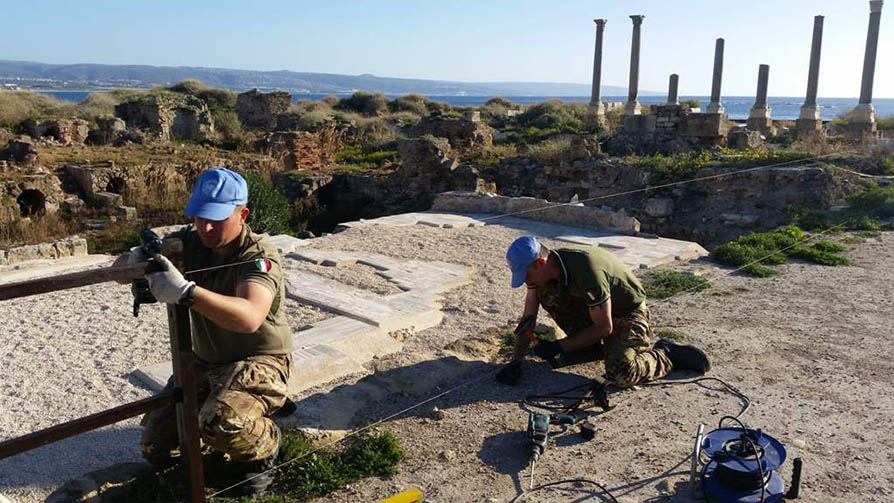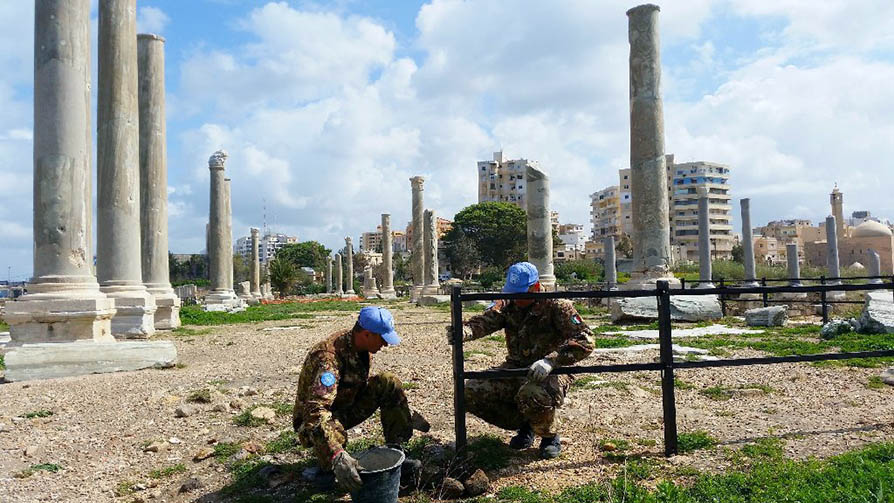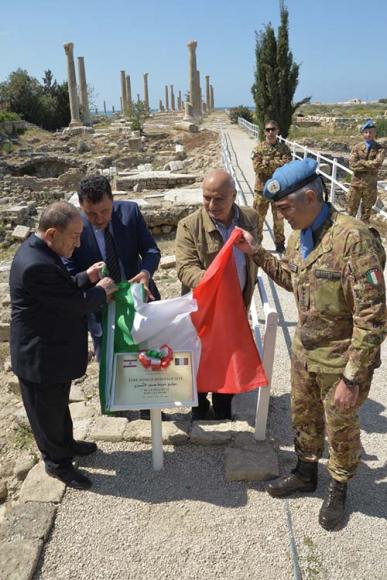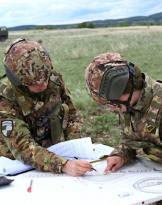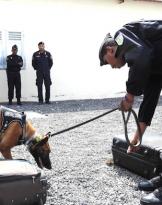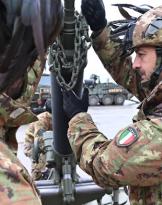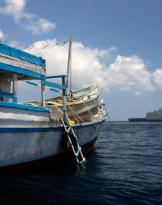The Italian blue helmets of the UNIFIL mission have completed a project aimed at the recovery and infrastructural maintenance of the archaeological sites of the Roman era located in the city of Tire.
The recovery and implementation of the site's infrastructures made it possible to equip the two main archaeological areas of the Lebanese city with new and efficient walkways, accompanied by thematic toponymy and distribution of the transit areas for visitors, who will be able to visit the new areas of the sites named UNESCO heritage as early as 1984. The Italian soldiers of the technical / logistic sector of the Italbatt maneuvering unit, currently based in Nizza Cavalleria, carried out the recovery works.
The effort of the Italian Blue Helmets in support of the conservation of the archaeological heritage of the City of Tire was particularly appreciated and recognized by the Lebanese authorities who attended the inauguration, including the mayor of the city of Tire, mr. Hassan Dbouk, and the President of the Municipalities, Mr. Al Houssayini. The opening of the new areas of the site that can be visited to the public was accompanied by the melodies of the fanfare of Taurinese and by the presence of numerous students from primary schools and universities in the city.
In recent months the Italian contingent, composed almost entirely by the staff of the Alpine brigade Taurinese, has coordinated with the local authorities and the Lebanese armed forces numerous activities aimed at the recovery and control of the archaeological sites of Tire and other areas of historical interest in southern Lebanon; the Italian sensitivity towards the protection of the Lebanese cultural heritage has attracted numerous consents, managing to generate strong enthusiasm and new tourist / commercial development.
The areas involved in the projects are the Al-Bass site, including an extensive necropolis with hundreds of sarcophagi and tomb complexes, a triumphal arch, an aqueduct and the second largest and best preserved racecourse in the world, and Tiro Città, where they can admire mosaics and streets paved with marble, colonnades, public baths, an entire residential neighborhood, a unique rectangular arena. The sites date back to the Roman and Byzantine periods between the 2nd and 6th centuries AD, although remains of the Phoenician civilization were found under the Tiro Città site.
